First Woman Justice of the Peace in America
Wyoming can claim many firsts for women: the right to vote, the first woman governor, and the first woman judge in American history, Esther Hobart Morris. At the time of her appointment as Justice of the Peace, Morris was 59 years old. Although widely celebrated as a hero of the early suffragist movement, she spent the first 55 years of her life living quietly in New York state and Illinois.
Early Years
Esther Hobart was born August 6, 1814 in Tioga County, New York. Orphaned as a young girl, she served as an apprentice to a seamstress and ran a millinery business out of her grandparents’ home. She was a successful businesswoman by her early 20s. As a young woman, Esther spoke out against slavery, and supported women’s right to organize societies that would abolish slavery.
Marriage and Family
In 1841 Esther married Artemus Slack, a civil engineer. Three years later, just short of her 30th birthday, her husband died, leaving Esther with an infant son. In 1845 she moved to Peru, Illinois, where her late husband had acquired property. While attempting to settle her late husband’s estate, she encountered legal roadblocks because it was illegal for women to own or inherit property.
In 1842 Esther Hobart married John Morris, a local merchant, and they had twin sons.
In the spring of 1868 John Morris and Esther’s son from her first marriage, Archibald (Archy) Slack, moved to South Pass City in the newly created Wyoming Territory to open a saloon to serve the booming gold mining town. Both Morris and Slack purchased interest in mining properties soon after their arrival.
In 1869 Esther and her eighteen-year-old twin sons, Robert and Edward, left for Wyoming to join her husband and eldest son. They first traveled via the newly completed tanscontinental railroad, then by stagecoach before ascending a gradual mountain pass to the Sweetwater Mining District. The dry, rocky landscape was startlingly different from the fertile landscape she had known in Illinois.
The Morrises settled into a 24 foot by 26 foot log cabin at 7,500 feet in elevation that Archy had purchased. Winters were brutal. Those who stayed on the mountain pass during the long winters, like the Morrises, battled sub-zero temperatures, high winds, and deep snow which might not recede until June.
At the time, the burgeoning suffrage movement in the East was stalled as many men feared that women would be unable to properly fulfill their domestic roles if granted equal rights.
Giving Women the Vote
In November 1869, William Bright, a territorial representative from South Pass City, had come to share his wife Julia’s belief that suffrage was a basic right of American citizenship. Eager to promote Wyoming Territory and to attract more women settlers, Bright introduced a bill giving women the right to vote and hold public office, and the all-male twenty-member Territorial Legislature approved the bill, stating:
Every woman of the age of twenty-one years, residing in this Territory, may at every election to beholden under the law thereof, cast her vote.
Signed into law by Governor John Campbell in December 1869, the bill made Wyoming the first territory or state in American history to enfranchise women, and to open the way for women to serve in political office. The state’s pioneering legislation prompted noted activist Susan B. Anthony to call for Eastern women to migrate en masse to the State.
Justice of the Peace
Eager to take more actions to further women’s political power, in early 1870 Campbell appointed Esther Hobart Morris as Justice of the Peace. Justices of the Peace were usually not required to have any formal legal education in order to qualify for the office. They typically presided over misdemeanor cases and other petty criminal infractions. Proceedings before justices of the peace were often faster and less formal than the proceedings in other courts.
It took some “prodding” but Morris subsequently completed an application for the post and submitted a required $500 bond. The Sweetwater County Board of Commissioners in a vote of two to one approved her application. The county clerk telegraphed a press release announcing the historic event of the first woman Justice of the Peace, which read:
Wyoming, the youngest and one of the richest Territories in the United States, gave equal rights to women in actions as well as words.
Judge Esther
Morris began her tenure in South Pass City, Wyoming on February 14, 1870. Ironically, she was appointed as the first woman Justice of the Peace in the United States to serve out the term of a man who had resigned in protest after the women’s suffrage amendment passed. Despite little formal education, Judge Morris handled her South Pass City courtroom competently.
Since men outnumbered women 4 to 1 in her mountain community, Judge Esther held court over a camp of miners, gamblers, speculators, business owners, and a few prostitutes. The challenges dealing with a rough constituency in court were compounded by her husband John, who had a reputation as “a brawler, an idler and a drunk.” According to American Heritage Magazine, Morris had him arrested for assault and battery.
Historical documents record a steady stream of civil and criminal matters in her courtroom during an eight and one-half-month tenure. During her tenure she ruled on 26 cases, including nine criminal cases, not one of which was reversed on appeal. She held her justice of the peace post until the term that she had been appointed to fill expired on December 6, 1870.
Author Lynne Cheney wrote in American Heritage Magazine:
When the lawyers who appeared in her court tried to embarrass her with legal terms and technicalities, she admitted her lack of training but was quick to let them know just whose court they were in. One of the lawyers who practiced before her recalled that “to pettifoggers she showed no mercy.”
Morris’ historic judgeship not surprisingly garnered favorable reviews in the South Pass News, as her son Archy was the editor. However, the historical record reveals little fanfare in the remainder of Wyoming’s press. The Wyoming Tribune, published in Cheyenne, did note the comments of Territorial Secretary Lee: “the people of Sweetwater County had not the good sense and judgment to nominate and elect her for the ensuing term.”
Morris’ success proved wrong the naysayers who stubbornly insisted a woman could not manage equality without compromising her duties as a wife and mother. Although she remained in office for less than nine months, Morris believed she had successfully passed the “test of woman’s ability to hold public office.” Within a year of her judicial term, women sat on a Wyoming jury for the first time.
Life was good in South Pass City in the midst of the Gold Rush, when the mines and adjoining businesses provided employment for 2,000 workers during 1868 and 1869, but then came the bust. By 1870 most miners had left, leaving as few as 460 residents. An 1871 fire struck the South Pass City newspaper office owned and operated by Esther Morris’ son, Archy Slack, forcing him and his wife Sarah to move to Laramie, Wyoming.
In the spring of 1872, Esther Hobart Morris left her home and her husband, and lived in Laramie with her son for a while. She next moved to Albany, New York, and then to Springfield, Illinois. She returned to Wyoming and spent summers there with her sons. Her restlessness finally ended in the 1880s when she moved to Cheyenne, Wyoming to live with her son Robert.
Though hailed by American suffragists as the first female judge in the world, Morris does not appear to have been a dedicated women’s rights activist. Although credited in some accounts as the driving force behind the suffrage bill, she was probably just a supporter. Morris and William Bright did not meet until after the historic legislation had passed.
Despite her reluctance to be revered as an activist, Morris has often been celebrated as an important symbol of women’s rights. After she retired as justice of the peace in November 1870, there is no indication that she ever again sought public office. Nonetheless, as the first woman judge, Morris has continued to be a symbol of the long battle for women’s rights in America.
Late Years
A story spread throughout Wyoming that celebrated Esther Hobart Morris as the instigator and possibly co-author of the state’s groundbreaking 1869 legislation that gave women the right to vote. Contemporary research shows that Morris’ friend, Melville C. Brown, president of the 1889 Constitutional Convention in Cheyenne, claimed that Morris presented the suffrage bill to the legislature.
Then there was H. G. Nickerson, who wrote a letter to the Wyoming State Journal which recounted the story of a tea party given by Esther Hobart Morris and his attendance as a legislative candidate, 50 years after the reported event. Nickerson notes: “To Mrs. Esther Morris is due the credit and honor of advocating and originating woman’s suffrage in the United States.”
Nickerson’s story gained widespread prominence after his friend, Wyoming historian Grace Raymond Hebard, published the account in a 1920 pamphlet entitled How Woman Suffrage Came to Wyoming, which was so widely distributed that public school students read the story. Hebard spent many years promoting Morris as an instigator and co-author of Wyoming’s suffrage legislation.
When Wyoming entered the union as the Equality State in 1890, the statehood committee honored Morris nationally as a suffrage pioneer, and at age 80, she was a delegate to the national suffrage convention in Cleveland. Subsequently, Archy Slack, editor of the Cheyenne Sun newspaper began referring to her as the Mother of Suffrage.
Esther Hobart Morris died April 3, 1902 in Cheyenne, Wyoming at age 87. She is interred at Lakeview Cemetery in Cheyenne.
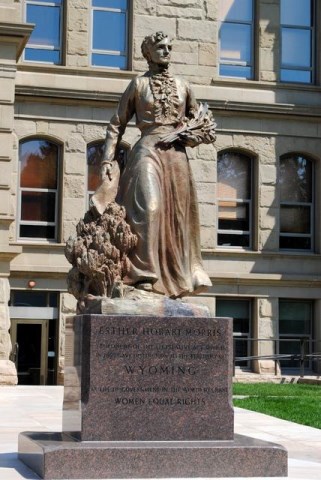
Image: Morris Monument
Wyoming State Capitol Building
Cheyenne, Wyoming
Inscription:
Esther Hobart Morris, proponent of the legislative act which in 1869 gave distinction to the territory of Wyoming as the first government of the world to grant women equal rights. A grateful people honors this stalwart pioneer who also became the first woman Justice of the Peace.
In 1960, an exact replica of this statue was installed in Statuary Hall at the U.S. Capitol Building in Washington, DC.
In 1960, Wyoming further celebrated Morris as the heroine of Wyoming suffrage by donating a bronze statue of her to the National Statuary Hall in the U.S. Capitol Rotunda in Washington, DC.
SOURCES
Wikipedia: Esther Hobart Morris
Wyoming State Archives: Esther Hobart Morris
History.com: First Woman Judge Dies in Wyoming
Trailblazer – Wyoming’s First Female Judge, Esther Hobart Morris
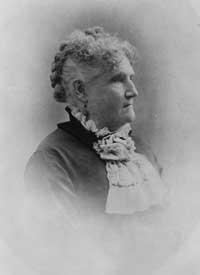

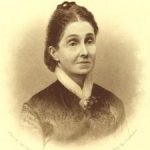

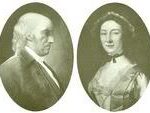

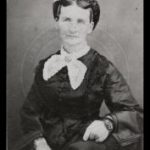
oh my gosh I love you and I love you website my child Comments or emails you but you do not answer…please it is his dream for you to answer him